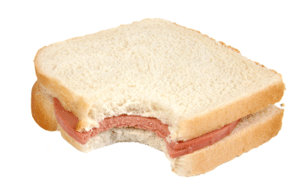Gee whiz: The healthy foods of my past
We live in a time of fabulous excess. I can go to my local supermarket and purchase almost any product imaginable. This abundance of available produce continues to amaze me. I can buy strawberries, grapes, avocados, peppers, pears, and more--year round. In addition, organically grown food and free-range meat is everywhere. Yet we live in a time where our population is unhealthier than ever.

We live in a time of fabulous excess. I can go to my local supermarket and purchase almost any product imaginable. This abundance of available produce continues to amaze me. I can buy strawberries, grapes, avocados, peppers, pears, and more--year round. In addition, organically grown food and free-range meat is everywhere. Yet we live in a time where our population is unhealthier than ever.
Obesity and its associated list of diseases--heart disease, diabetes, etc.--is a growing problem of epidemic proportion. Despite the widespread availability of these healthy foods our BMIs are rising like helium balloons.
My generation wasn’t as overweight, so maybe it’s time to revisit some of the healthy foods of my childhood. Perhaps if these mainstays were reintroduced to schools and families the obesity epidemic could be stayed or even reversed.
I am sure the double strands of my DNA are bound together by Cheez Whiz. Everyone born in the 1950s and 1960s knows that the only purpose for celery is as a receptacle for this orange goo. I remain faithful that there is at least some real cheese in there somewhere. If you look up the definition of the word whiz, you will find that it is “to make a whirring or hissing sound as of an object speeding through air.” How can this be bad for you?
How about bologna? I went 30 consecutive days in grade 7 consuming at least some of this meaty goodness--fried, raw, in sandwiches, covered with Cheez Whiz--I ate it all.
Now don’t concern yourself too much with what is in bologna. On road trips through farmlands I can remember my parents pointing out cows, pigs, and chickens, but I don’t recollect them saying, “Oh kids, look at the baby bolognas.”
All I know is there is nothing like a fried bologna sandwich on Wonder Bread. What exactly is the “wonder” of this bread that we are supposed to wonder about? Carefully constructing a 1-inch layer of Skippy smooth peanut butter without tearing the bread was a wonder indeed. Not only would your mouth water anticipating the peanut adhesive stuck to the roof of your mouth, but you were elevating your fine motor skills to a new level. What joy to wash this down with cherry Kool-Aid or orange Tang (the chosen beverage of astronauts).
I would be remiss to not mention Spam. We all accepted that there was some meat present, but the real mystery was the gelatin-like substance that bound it together. Clearly, this came from outer space (I think the astronauts brought it back to complement the orange Tang). It is a travesty that the word spam now stands for unwanted electronic messages.
So perhaps it is time to scrap the organic section at our local grocery stores and replace it with childhood foods of the baby boomer generation. Hello, the name says it all--we are booming. The problem is with all these so-called experts who testify that these products aren’t natural or healthy. To them I say, “the proof is in the Jell-O pudding.”
--DRR

